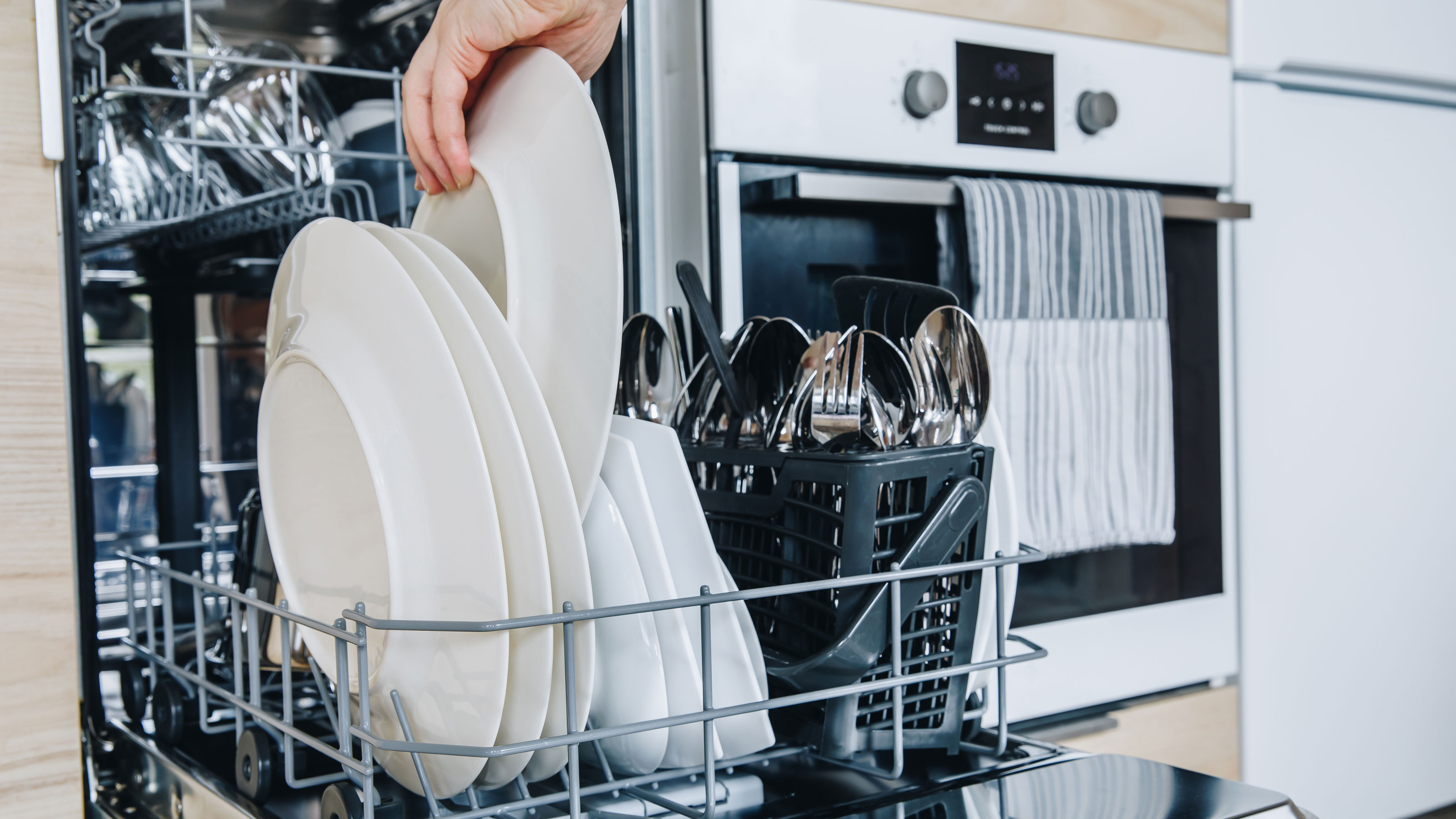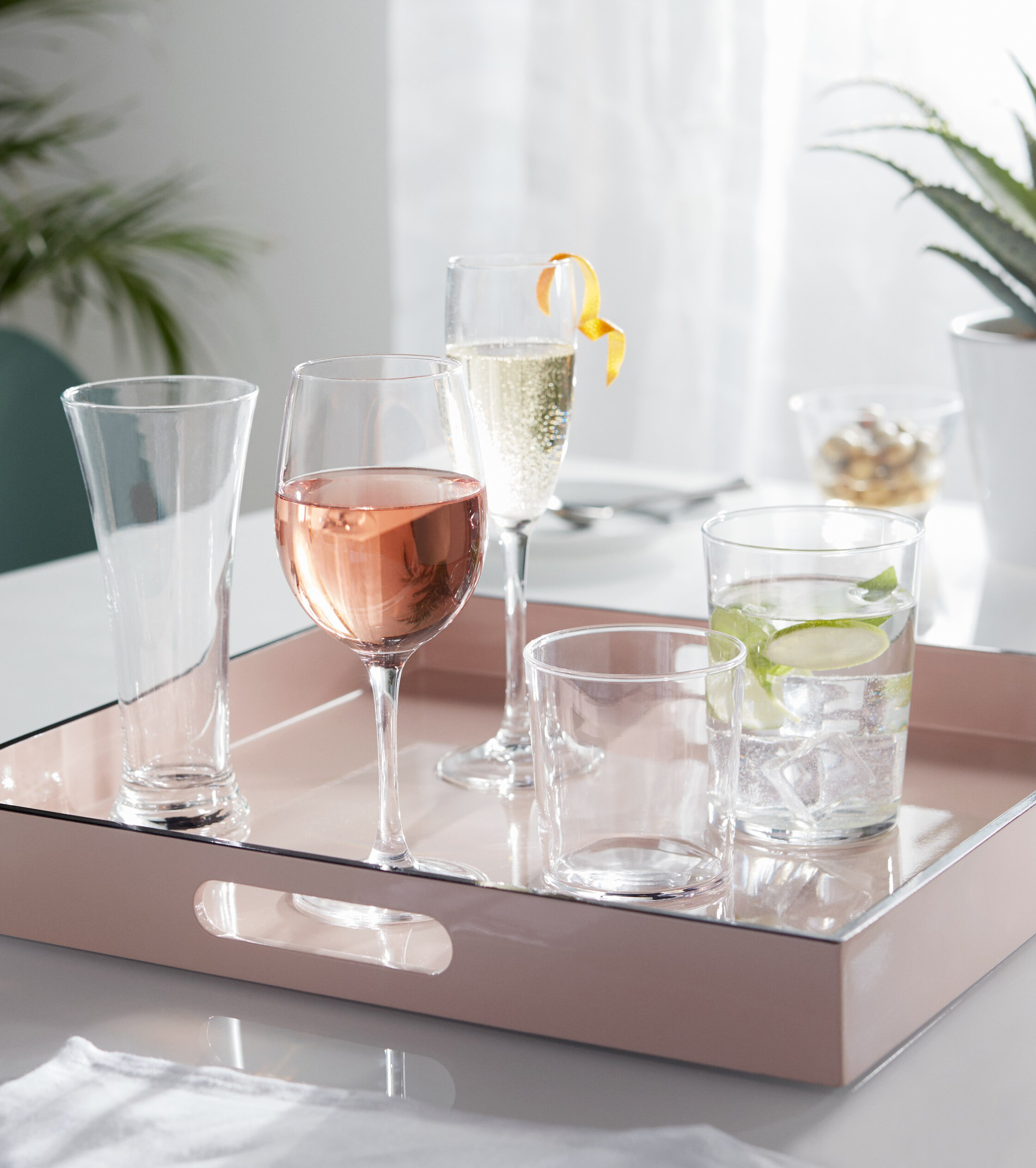Constantly rewashing dishes? Expert says you're loading your dishwasher all wrong...
Forget rewashing dishes, this is the ultimate step-by-guide to loading a dishwasher the right way.

Ever wondered how to load a dishwasher correctly? Most of us use our dishwashers almost every day and yet for many, the appliance can remain something of a mystery even after many years of using it. Do the pans go on top or bottom? Which way do the forks face? How do you get the glasses to really sparkle? We'll admit that we've asked ourselves these questions more than once.
In order to get the most out of your best dishwasher and not need to re-wash dishes that have come out dirty, follow this easy step-by-step guide recommended by a home maintenance expert with over 30 years of experience in the trade so that using this handy appliance is a total breeze, as it should be!
How to load a dishwasher
Loading the dishwasher correctly will make a huge difference to how clean your dishes come out and how well your dishwasher operates more generally. As home maintenance expert Jack Williams explains, 'if your dishwasher isn't cleaning the dishes as well as you'd like, you might be inclined to blame the machine or your detergent brand. However, the issue could just be in the way you stack the machine.'
So, what's the correct way to load your dishwasher?
1. Start by loading the bottom rack with pots and pans
If you need any heavy pots and pans washed, they should always go on the bottom rack of your machine. Save the top rack for more delicate items. There are some pot and saucepan types you shouldn't put in your dishwasher. According to Williams, these include cast iron and aluminum. Cleaning cast iron is a little more intricate and items should be rinsed by hand only because 'If cast iron is placed in a dishwasher, it will rust and lose seasoning.' Aluminum pots 'are easily scratched and might develop a poor sheen or turn a darkish tint.'
2. Make sure all dishes face the center of the machine
This step is very important if you want a thorough clean to your dishes. According to Williams, arranging the dishes so that they face the middle of the machine is crucial 'because the spray arm moves in a round pattern, plates that aren't facing the center will get a thorough washing on the wrong side.'
3. Place plastic containers on the top rack
Any food storage and containers like Tupperware should go on top. The reason for this is that 'the heating unit is located on the bottom' and plastics and polymers are heat-sensitive. So, they 'should be placed on the top rack to avoid melting.'
Get small space home decor ideas, celeb inspiration, DIY tips and more, straight to your inbox!
4. Load the glasses
Now come the glasses. Not many people know this, but glasses should be placed on the top rack 'between the tines rather than over them.' To prevent water from pooling inside them, place all glasses at a 45-degree angle.

5. Load the cutlery
Finally, it's time to load the cutlery. 'To avoid nesting inside a crowded utensil basket, forks and spoons should face up. This also prevents the basket from getting in the way of the wash, ensuring that the utensil heads are clean. If you have a lot of cutlery to wash, spread it out (to avoid nesting) or alternate it head down, head up.'

Jack Williams is the CEO of HandymanReviewed, which aims to provide the best handyman service reviews and feedback worldwide. Jack has been in the repair and maintenance field for over 30 years.
Why is this the most efficient method of loading a dishwasher?
Following a proper method when loading your dishwasher matters. Williams says that 'a dishwasher can significantly enhance your cleaning routine, freeing up time for other activities. We adore our dishwasher, but it is critical that we understand how to clean, load, and operate it correctly.' An incorrectly loaded dishwasher will give you poor results and even cost more to run. And if you're wondering whether dishwashing vs handwashing is best for energy consumption and ehem bills, much of it depends on whether you're loading your appliance correctly in the first place.
What are the top errors when dishloading?
We've all made them, but avoiding these common dishwasher mistakes will help you avoid having to rewash your dishes or and/or a dishwasher that doesn't drain:
- Overfilling: 'resist the desire to overfill the dishwasher. If one thing totally blocks another, neither will be completely clean.'
- Pre-rinsing: Some people may be shocked by this as they've always pre-rinsed, but 'the practice is needless and unproductive. Most modern dishwashers include a sensor that analyzes the water to calculate how long the cycle should last and how much water is required to create a complete clean.'
- Stacking: 'Each item requires space around it for water and detergent to clean it.'
- Not waiting until the dishwasher is full: 'avoid running a half-empty dishwasher. You can save money and energy by waiting until the next day to run it.'
- Positioning your dishwasher next to your fridge: 'To keep cool, your fridge will need to consume more energy, squandering energy and costing you more money.'
- Overstuffing the cutlery basket: 'If you like your silverware to snuggle, it won't get clean since water requires room, which it can't find if the cutlery is nestled together.'
Do I need rinse aid?
Many people wonder if they need to add rinse aid after they've loaded their dishwasher. The answer is: it depends entirely on how hard the water is where you live. Hard water = rinse aid necessary, or your glasses will come out streaked with residue. Soft water = your dishwasher tablets should be enough.
A note on the dishwasher instruction manual
Williams has wise words for anyone who's ever just thrown away their dishwasher's instruction manual: 'Because we all know how to use a dishwasher, the handy-dandy dishwashing handbook may be one of the most underappreciated pieces of how-to literature known to man. However, read it! And listen to its wise counsel! Each dishwasher is unique, and its playbook will best guide you to what it prefers.' So, even if you think you know exactly how to load a dishwasher, make the time to read through the manual just to be on the safe side.
Words to live by. Happy instruction manual reading!
Anna is a professional writer with many years of experience. She has a passion for contemporary home decor and gardening. She covers a range of topics, from practical advice to interior and garden design.